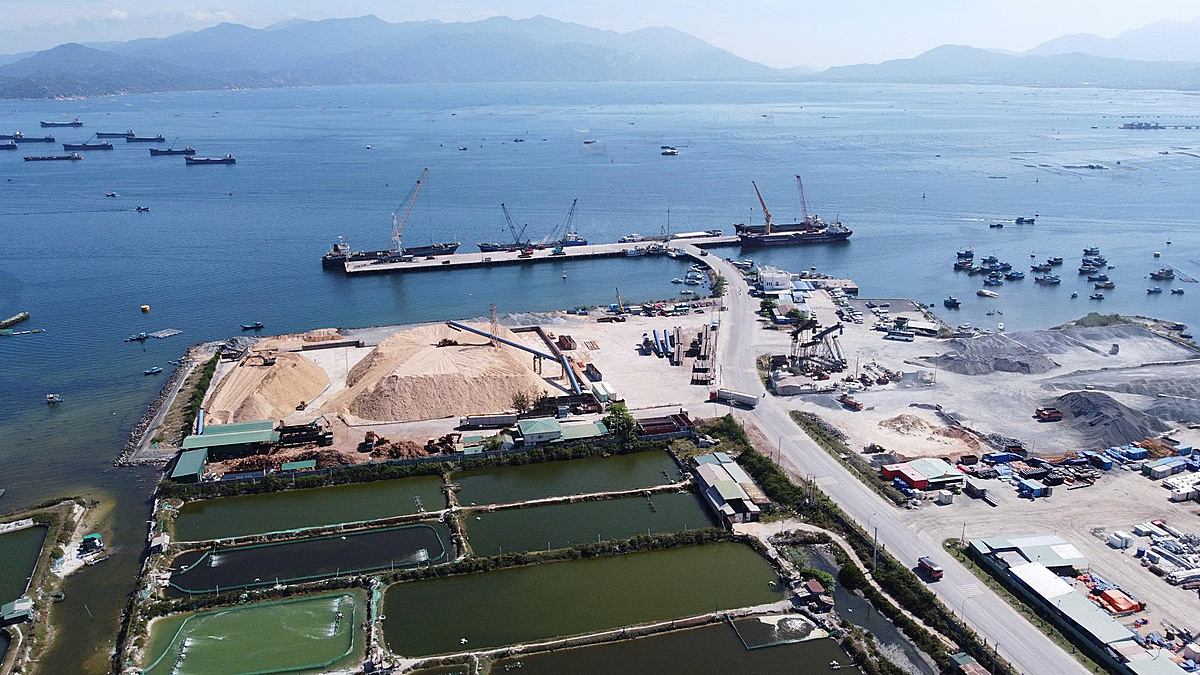The Khanh Hoa People's Committee (UBND) approved the first phase of the project, focusing on land reclamation, on 18/9. The project is led by Cam Ranh Port Joint Stock Company.
The project involves reclaiming nearly 20,000 m2 of land, with 18,196 m2 being reclaimed from the sea. A new rock embankment over 511 m long, divided into three sections, will be constructed.
The project aims to establish a primary supply depot for petroleum and aviation fuel, increasing fuel production and expanding the aviation fuel market for Petrolimex Aviation Fuel Joint Stock Company in the region.
 |
The area to be reclaimed for the fuel and aviation fuel depot in Cam Linh ward, Khanh Hoa. Photo: Hoang Sao |
The area to be reclaimed for the fuel and aviation fuel depot in Cam Linh ward, Khanh Hoa. Photo: Hoang Sao
The second phase will involve constructing the fuel depot itself, spanning about two hectares with a total storage capacity of 13,500 m3. The building area will be a maximum of 12,000 m2, with one or two stories and a maximum height of 17.2 m. This phase is expected to be completed within 13 months of the land reclamation's completion.
The entire project is slated for completion within 23 months: 10 months for land reclamation (phase one) and 13 months for the fuel depot construction (phase two). The project has a 20-year operational lifespan.
According to the Khanh Hoa UBND, the investor is legally responsible for the accuracy of the data provided for appraisal and approval. They are also required to coordinate with relevant agencies to survey the site, define project boundaries in line with the approved investment plan, and implement environmental protection measures as outlined in the approved environmental impact assessment report.
The environmental impact assessment report acknowledges that reclaiming land from the sea will alter the area's topography and natural landscape, impacting water flow dynamics.
The land reclamation and construction will also encroach on the habitat of coastal flora and fauna, disrupting established ecosystems. This could lead to changes in seabed structure and a decline in biodiversity.
The investor has committed to mitigating the impact of land clearing and dust from excavation and filling activities. This includes providing workers with protective equipment and regularly spraying water to suppress dust at the project site and along transportation routes.
Bui Toan












